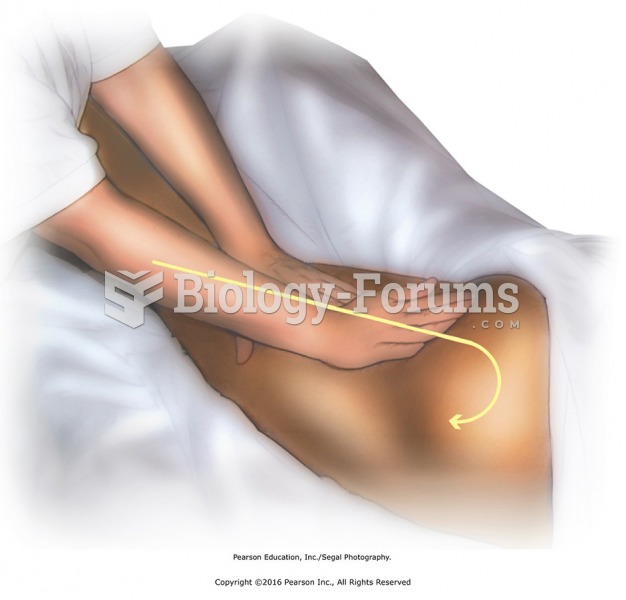|
|
|
Adult head lice are gray, about ? inch long, and often have a tiny dot on their backs. A female can lay between 50 and 150 eggs within the several weeks that she is alive. They feed on human blood.
According to the FDA, adverse drug events harmed or killed approximately 1,200,000 people in the United States in the year 2015.
Many medications that are used to treat infertility are injected subcutaneously. This is easy to do using the anterior abdomen as the site of injection but avoiding the area directly around the belly button.
Essential fatty acids have been shown to be effective against ulcers, asthma, dental cavities, and skin disorders such as acne.
Parkinson's disease is both chronic and progressive. This means that it persists over a long period of time and that its symptoms grow worse over time.
 Apply effleurage to forehead with thumbs. Stroke from middle of forehead to the temples. Begin just ...
Apply effleurage to forehead with thumbs. Stroke from middle of forehead to the temples. Begin just ...
 Apply oil or lotion to the entire leg and hip. Slide palms from lower leg to buttocks. Inside hand ...
Apply oil or lotion to the entire leg and hip. Slide palms from lower leg to buttocks. Inside hand ...
 Apply superficial friction to the upper and lower back. Stand to one side. Ask the recipient to lean ...
Apply superficial friction to the upper and lower back. Stand to one side. Ask the recipient to lean ...




